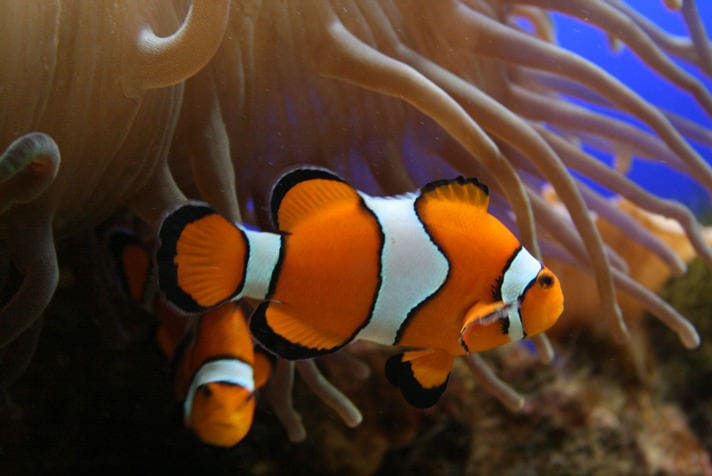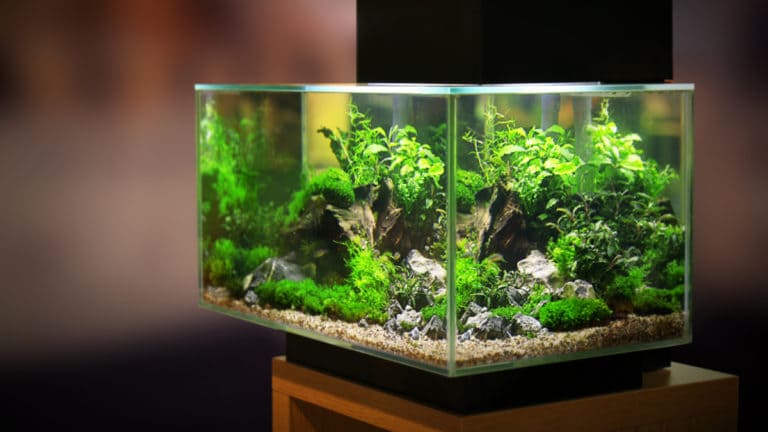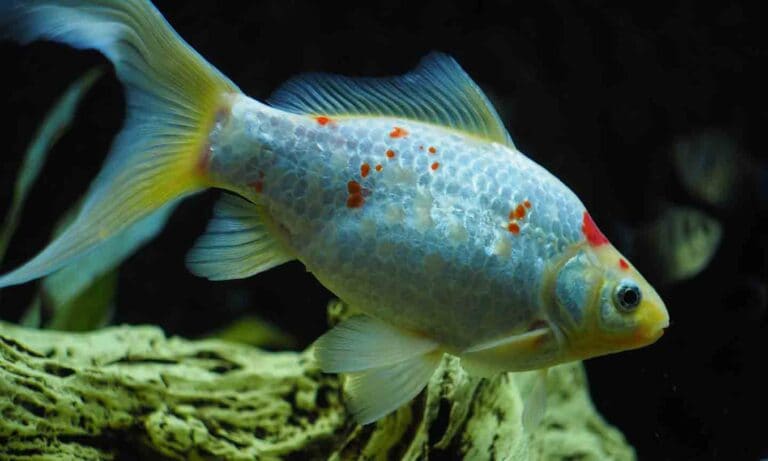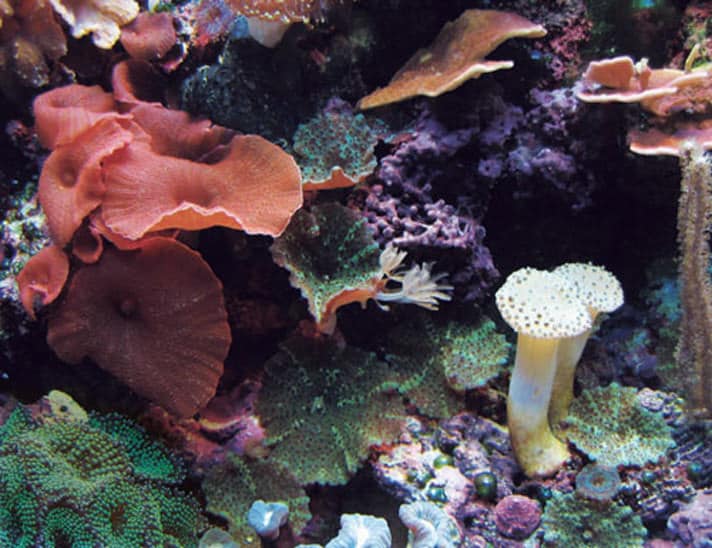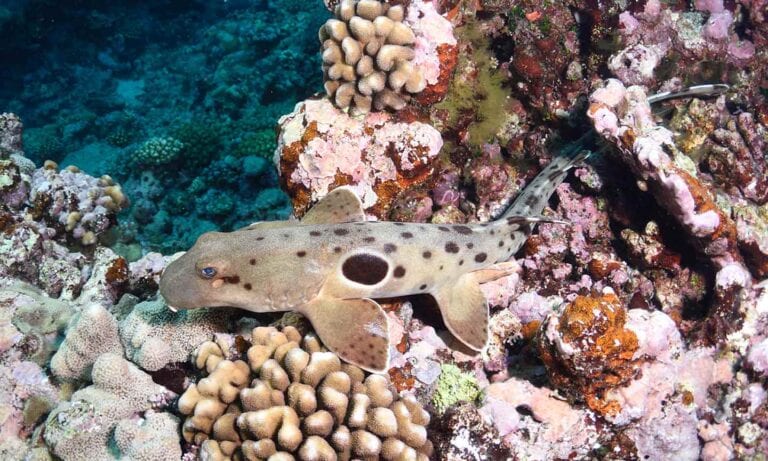It would be difficult, if not impossible, to have a reef tank completely devoid of algae in some form… nor would it be desirable. Many types of algae have their place in a reef ecosystem. However, in a fish aquarium setting, we do not want algae to detract from the aesthetic we are striving to perfect. Though algae control can accurately be viewed as a delicate balancing act of nutrient levels, lighting parameters and biological control, the emotional aspect lent to the mix by the aquarist can make it seem more like an all-out war. With that in mind, here are three strategies any aquarist should be aware of in order to gain the upper hand against algae.
Strategy 1: Attack the Supply Lines
In human history, the deciding factor in many battles was based on the availability of food. In many ways, the battle against algae is no different. If excess nutrients exist in your system, algae will inevitably proliferate to take advantage of that fact. If you can keep available nutrient levels low, there will be relatively little to worry about.
The presence of fish, mollusks, crustaceans (even isopods and amphipods) and other creatures will guarantee that nutrients for algae, such as phosphates and some form of nitrogen, will be produced in your system. The question is whether or not these nutrients will be available to the algae.
A good protein skimmer can be an excellent ally in the battle against algae. Many of the substances your protein skimmer picks up contain nitrogen, as well as other nutrients, that algae will readily exploit. As long as your skimmer is in good working order, and you empty the collection cup of skimmates regularly, you are making an effective preemptive strike.
Water changes help dilute certain nutrients as well, especially in smaller systems where it is practical to make proportionately larger and more-frequent water changes. Live rock and live sand are on your side, too. The various bacteria that inhabit live rock fight against algae by processing the ammonia in the system (which would otherwise become a nutrient to algae) into various forms, eventually outgassing nitrates into nitrogen gas.
How you feed your reef inhabitants directly influences the nutrients available to algae. The species of organisms you keep, the size of the biomass in your system and the speed of growth you want your organisms to achieve all have an effect. When you feed the inhabitants of your reef system, whether fish, corals or other organisms, it is also important to remember that if there are consistently surplus nutrients in the water column, it rarely takes long for some type of algae to exploit that surplus.
Healthy photosynthetic corals and clams can help fight against algae by providing stiff competition. The zooxanthellae inhabiting the tissues of your corals are in the perfect place to get first crack at the nutrients the corals produce. Anything the zooxanthellae utilize is simply not available in the water column for algae.
Not all algae are among the ranks of the opposing forces. Macroalgaes can act as nutrient sponges in your system, much as other photosynthetic organisms do. A healthy crop of Chaetomorpha in a refugium, for example, can pull a lot of nutrients from your water column. You can then remove the Chaetomorpha from the refugium by the handful as necessary, effectively exporting excess nutrients from your system. Some macroalgaes, such as various species of Caulerpa, can be used in the same way, but they can become pestiferous themselves if not carefully controlled. They are even illegal in some areas for this reason. Even the tiniest fragment of Caulerpa can survive incredibly inhospitable treatment, only to thrive and start a new colony once conditions improve. Even if it is legal in your area, I don’t recommend introducing Caulerpa to your tank unless you keep fish (such as various tangs) that will eat it and you are certain that you can dispose of any remnant responsibly.
There is another caveat with regard to macroalgaes. Although they tend to reproduce asexually in favorable conditions, for various reasons, they will sometimes reproduce sexually (this event is often referred to as “going sexual”). When this happens, they release their gametes into the water column, which can have a sudden negative effect on water quality.
The duration, intensity and quality of light all have an influence on algal growth. In a fish-only tank with live rock, many organisms can get along with somewhat subdued lighting. In a reef tank, many hobbyists want the best lighting they can afford, not only to provide their corals and anemones with the proper photosynthetically available radiation, but also to provide an aesthetically pleasing view. There is certainly nothing wrong with these efforts, but it is important to note that an increase in light can increase algal growth if nutrient levels are not controlled. While an in-depth exploration of reef lighting is beyond the scope of this article, keep in mind that lighting should be suited to the inhabitants of your aquarium. For example, you may need very intense lighting if you’re keeping bubble tip anemones or tridacnid clams, but if your only photosynthetic organisms are a few mushroom corals and zooanthids, don’t overdo it. Nature abhors a vacuum, and algae will step in to utilize the light if they can.
Strategy 2: Hand-to-Hand Combat
Otherwise known as manual removal, this can be an important aspect of algae control. For those types of algae that grow as green films on the glass, a simple scraper can do wonders. Coralline algae is usually regarded as a beneficial inhabitant of live rock, but it is unwelcome when it grows on the panels of glass or acrylic you use to view your aquarium. Removing coralline algae from a glass pane with a stainless-steel scraper is not difficult, but you must take care not to scratch the glass. Filamentous algae and excess macroalgae can be removed with tweezers, or even with your hands, but aquarium gloves are recommended if you do so.
Strategy 3: Muster the Troops
Certain fish, mollusks and crustaceans can be your allies against algae. A number of fish, including the aptly named lawn-mower blenny (Salarias fasciatus) and the bicolor blenny (Ecsenius bicolor), will help remove algae from the glass and other surfaces. Many tangs will attack both micro- and macroalgae.
There is quite an array of algae-eating snails, such as nerites and turbos, that will constantly patrol the tank, going a long way toward keeping the glass clean.
Certain small hermit crabs, such as the blue-legged variety (Clibanarius tricolor), are opportunistic omnivores that will incessantly crop algae in their search for food. Although prized for this characteristic by some reefkeepers, others point out that hermit crabs will sometimes attack sessile invertebrates. Some species appear to be more prone to do this than others. I have kept blue-legged hermit crabs in my nano reef long term with several species of soft corals without incident. Others may have had different experiences.
Many establishments that sell reef inhabitants advertise and sell “algae crews.” These are assortments of algae-eating mollusks, crustaceans and more. They are intended to control a wide variety of algal types. You can often request an algae crew specifically prepared to fit the size of your system.
There are many types of algae that can occur in marine and reef aquaria. There are several I have battled personally and others I have never encountered. Although every system is different, the strategies provided here should help defend against a wide variety of algal invaders, whether your preferred battle cry is “Scrapers away!” or “Send in the tangs!”
Author Rus Wilson has kept and bred various aquatic creatures for more than 30 years. He has published a number of aquarium articles, and is currently working on a book about live foods. Since 2008, he and his wife Kelly have hosted the “Aquarimax Audio Show,” a weekly podcast for aquarium hobbyists found at aquarimax.com.
Read More
- Blennies That Eat Algae
- 7 Essentials for Your Freshwater Fish Tank
- Aquarium Therapy: How Fish Tanks Can Reduce Your Stress
Featured Image: Via BrainMaY/Flickr
Share:
